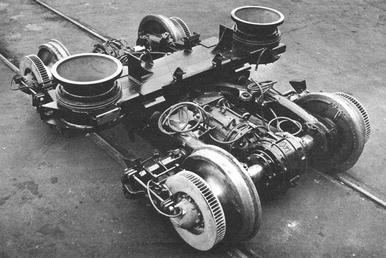The Metro liners had the truck sideframes and drop equalizers outside the wheels because of the MU traction motors.
If you use a truck like the Amfleet's have, that reduces the space available for the Traction motor. And by result reduces size and capacity of the traction motor.
You can see this on the various units made for the Meter gauge railroad. EVFM ordered standard SD45s. But six meter gauge sized traction motors could not take the current from an AR10 turned by 3600HP. The solution was eight traction motors.
To get around this. The pioneer III used an obnoxious gearbozx. Even with the gearbox. it restricted the traction motor size. Which is why they changed things on the Silverliner II

The Metroliner was intended for 150+ speeds. To do that they needed all the traction motor they could get. The motors used on the Metroliners 300HP per traction motor. About 1200HP per car. Your not going to push that thru that kooky pioneer gearbox.
